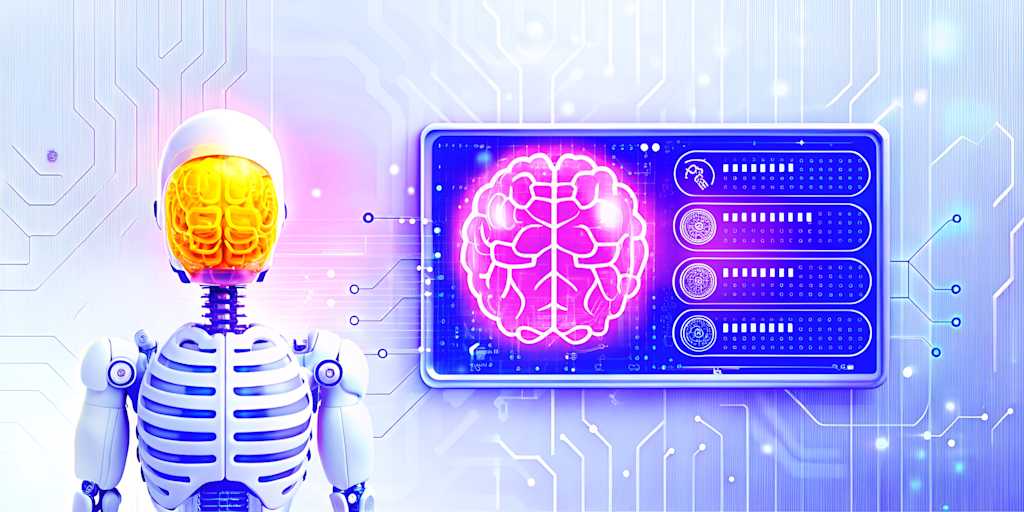What Makes Artificial Intelligence So Different From Machine Learning?


In this article
Artificial Intelligence (AI) and Machine Learning (ML) are two powerful technologies shaping the future of multiple industries. While they are often used interchangeably, AI and ML differ significantly in their scope, objectives, and applications. Understanding these differences is essential to grasp how each contributes uniquely to the digital landscape.
In this article, we will break down the definitions of AI and ML, explore their roles in real-world scenarios, and highlight how they differ from one another. Whether you're new to the field or looking to understand how these technologies are applied across industries, this guide will provide clarity.
What Is Artificial Intelligence?
Artificial Intelligence (AI) refers to the development of computer systems that can perform tasks typically requiring human intelligence, such as decision-making, problem-solving, and language understanding. The goal of AI is to create systems that can mimic human behavior and thought processes, allowing machines to solve complex problems autonomously.
AI encompasses a wide range of technologies and approaches, including natural language processing (NLP), robotics, and computer vision. It's a holistic technology designed to tackle diverse tasks, often by simulating human cognitive functions. AI systems learn from data, adapt to new inputs, and improve their performance over time.
Real-Life Example: AI in Healthcare In healthcare, AI systems are being used to analyze medical images, assist in diagnoses, and recommend treatment plans. For example, AI-powered tools can detect early signs of diseases like cancer in MRI scans, providing faster and more accurate diagnoses than traditional methods.
What Is Machine Learning?
Machine Learning (ML), on the other hand, is a subset of AI focused specifically on enabling machines to learn from data. Instead of being explicitly programmed to perform a task, ML models use algorithms to recognize patterns, make predictions, and continuously improve as they process more data. Essentially, ML allows machines to “learn” from experience without human intervention.
ML is often used for tasks such as classification, prediction, and recommendation systems. It is more limited in scope compared to AI but plays a crucial role in enabling AI systems to achieve accuracy and efficiency in specific applications.
Real-Life Example: Machine Learning in E-Commerce In e-commerce, ML algorithms are used to power recommendation engines. Platforms like Amazon and Netflix use ML to analyze user behavior and preferences to recommend products or content that users are likely to engage with, creating a personalized shopping or viewing experience.
Key Differences Between AI and ML
Although ML is part of the broader AI umbrella, there are key differences between the two:
Aspect | Artificial Intelligence (AI) | Machine Learning (ML) |
|---|---|---|
Definition | AI refers to creating systems that can mimic human intelligence and perform complex tasks autonomously. | ML is a subset of AI that focuses on allowing machines to learn from data and improve over time. |
Scope | Broad; covers multiple domains including robotics, natural language processing, etc. | Narrow; focuses specifically on data learning and prediction tasks. |
Objective | To develop systems that replicate human intelligence and solve complex problems. | To enable machines to learn and improve on specific tasks through data. |
Data Types | Works with structured, semi-structured, and unstructured data. | Primarily focuses on structured and semi-structured data. |
Autonomy | Can operate autonomously with minimal human input once programmed. | Requires continuous data inputs and monitoring to refine algorithms. |
Real-World Applications | Self-driving cars, virtual assistants, and robotics. | Recommendation systems, fraud detection, and predictive analytics. |
Decision-Making | Uses reasoning, self-correction, and learning to make decisions. | Relies on historical data to make predictions or classifications. |
Future Scope | Expected to revolutionize industries like healthcare, education, and customer service with more autonomous systems. | Will continue improving predictive models in sectors like finance, marketing, and e-commerce. |
Practical Implementations Across Industries
Both AI and ML have found their way into a wide range of industries, revolutionizing how businesses operate. Here’s a look at how each is applied:
AI in Manufacturing: AI-driven robots and automation systems are used in manufacturing to improve productivity and reduce human error. These robots can operate 24/7, allowing factories to increase output without the risk of fatigue or inconsistency. AI systems also monitor production lines to detect anomalies, ensuring quality control.
ML in Finance: Machine learning is a game-changer in finance, especially in fraud detection. ML models analyze transaction data in real-time to flag potentially fraudulent activity. By learning from past patterns, ML systems can predict and prevent fraud more efficiently than traditional rule-based systems.
AI in Customer Service: Virtual assistants and AI-powered chatbots have transformed customer service. These AI systems can handle customer queries, resolve issues, and provide personalized recommendations, enhancing the overall customer experience. Unlike humans, AI can scale to handle thousands of queries simultaneously.
ML in Marketing: In marketing, machine learning is used to analyze consumer behavior and optimize ad targeting. By understanding customer preferences, ML algorithms enable businesses to run more personalized and effective ad campaigns, increasing conversion rates.
2024 Stats: Growth, Future Scope, and Industry Impact of AI and ML
Metric | Artificial Intelligence (AI) | Machine Learning (ML) |
|---|---|---|
Market Size in 2024 | Expected to reach $500 billion globally by the end of 2024. | Machine Learning market is projected to reach $79.29 billion in 2024. |
Annual Growth Rate (CAGR) | AI's compound annual growth rate (CAGR) is forecasted at 36.2% from 2022 to 2024. | Market size is expected to show an annual growth rate (CAGR 2024-2030) of 36.08%. |
Industry Adoption | Over 80% of enterprises will have implemented AI in some capacity by 2024. | 57% of companies use ML to enhance customer experience. |
Impact on Workforce | AI is expected to automate 40% of routine tasks, leading to more efficient workflows. | ML will enable faster decision-making, reducing human error in repetitive tasks by 30%. |
Top Industries Leveraging AI | Healthcare, manufacturing, financial services, and retail. | E-commerce, marketing, finance, and social media. |
Predicted Future Scope | Autonomous systems will dominate sectors like healthcare, with AI-assisted surgeries and diagnostics becoming standard practice by 2030. | Machine learning will enhance personalization in marketing and finance, with better predictive analytics for customer behavior. |
Conclusion: AI vs. ML — Understanding Their Unique Roles
While AI and ML are closely related, they serve distinct roles in the technological ecosystem. AI encompasses a broad set of technologies aimed at replicating human intelligence, while ML focuses on data-driven learning and predictions within this larger framework. Together, they form the foundation of intelligent systems that are transforming industries worldwide.
Whether you’re a business looking to implement these technologies or an individual curious about their applications, understanding the differences between AI and ML will help you appreciate their respective contributions to the modern world.
Written by

